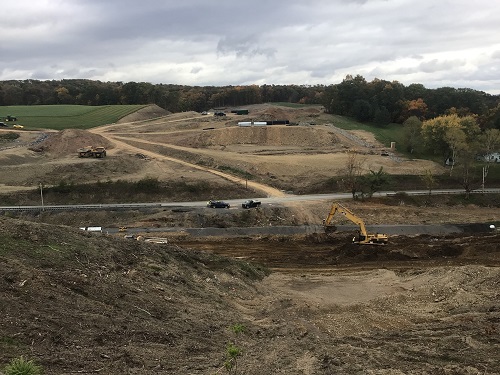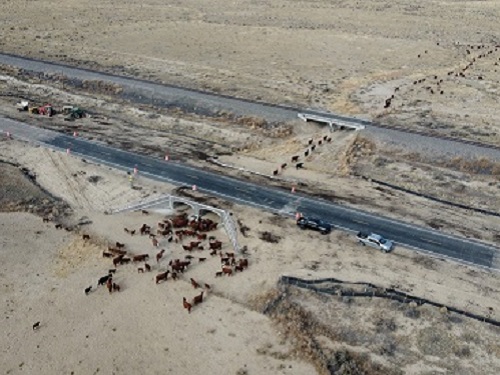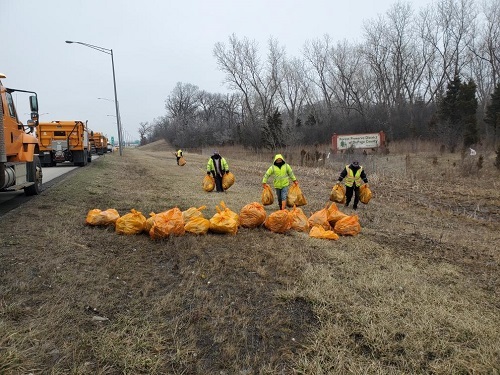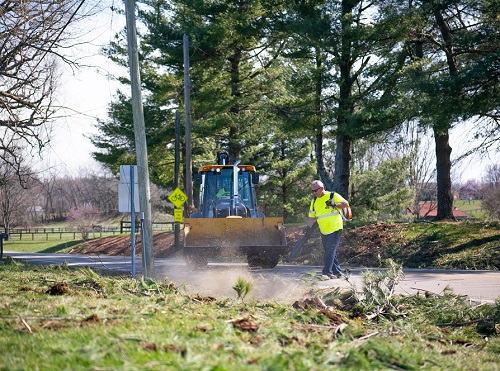FEDERAL ACTION
Millar Named a Resilience Roads Roundtable ‘Luminary’ – AASHTO Journal
EPA Proposes Stricter Federal Vehicle Emission Standards – AASHTO Journal
FHWA Seeks to Improve Project Environmental Reviews – AASHTO Journal
U.S. judge blocks Biden clean water rule in 24 states – Reuters
EPA used the climate law on cars. Power plants are next. – E&E News
Cities Put on Notice to Install Signals to Help Blind Pedestrians Cross Streets – Route Fifty
A Fork In The Road: States Will Determine The Future Of US Transportation Pollution – CleanTechnica
INFRASTRUCTURE RESILIENCE AND SUSTAINABILITY
Ithaca’s Crazy Plan to Be Our First All-Electric City – Rolling Stone
Seventeen States Could Accelerate U.S. Electric Vehicle Sales To 75% By 2050 – Forbes
Utah’s first inland port appears ready for construction, but it’s not in Salt Lake City – Salt Lake Tribune
Virginia transportation advocates call for infrastructure with bicyclists, pedestrians in mind – Virginia Public Media
Port of Oakland Has a Problem, and Its Name is Mud – Transport Topics
Port of San Diego approves $8.5M plug-in electrification project for idling ships in National City – San Diego Union-Tribune
South Carolina Emerges as a Leader in Electric School Buses – Government Technology
MnDOT looking to upgrade infrastructure for climate resiliency after record snowfall – West Central Tribune
Fort Lauderdale-Hollywood International Airport Reopens After Historic Deluge – WTVJ-TV
AIR QUALITY
NCDOT Issues Final Statewide ‘Clean Transportation Plan’ – AASHTO Journal
UCLA team launches ocean carbon capture project at Port of Los Angeles – Los Angeles Daily News
ENVIRONMENTAL JUSTICE
Pa. officials seek environmental justice concerns to shape climate planning – StateImpact PA
Blind Vermonters share their challenges with public transit and the struggle for independence – VTDigger
Traffic Engineers Learn How It Feels To Be Blind At Texas Tech Event – KCBD-TV
IndyGo Removes Barriers by Introducing New Accessibility Settings on Website – INDYGo (media release)
New Policies Expand Access to Opportunities at Port of Seattle – Port of Seattle (media release)
CULTURAL RESOURCES
Oklahoma Department Of Transportation Partners With Non-Profit To Help Clear Litter Off Roads – KWTV-TV
This 3,000-Mile Trail System Is Benefiting Communities In 15 States – Bicycling
Meet the Americans who live in their vans, buses and cars in pursuit of a simpler life using less energy. – Bloomberg
Virginia Takes Novel Approach to Preserving Historic ‘Green Book’ Locations – CityLab
HEALTH AND HUMAN ENVIRONMENT/ACTIVE TRANSPORTATION
Illinois hands out millions for bike, pedestrian trails and bridges in suburbs and beyond – Daily Herald
On Broadway, New York City’s slow march toward pedestrian-focused streets – City & State New York
The EPA Faces Questions About Its Approval of a Plastic-Based Fuel With an Astronomical Cancer Risk – ProPublica
Micromobility is Just Getting Started – Metro (blog)
TRB RESOURCES/ANNOUNCEMENTS
TRB’s 2023 Automated Road Transportation Symposium – TRB
How deadly are dust storms? – NOAA Research News
Online Course – Why Serving Everyone Doesn’t Serve Everyone – National Aging and Disability Transportation Center
FEDERAL REGISTER NOTICES
Renewed and Amended Memorandum of Understanding (MOU) Assigning Environmental Responsibilities to the State of Utah – FHWA (Notice and amendments and request for comments)
FTA Fiscal Year 2023 Apportionments, Allocations and Program Information – FTA (Notice)
Safety Advisory 2023–02; Train Makeup and Operational Safety Concerns – FRA (Notice)
Sport Fishing and Boating Partnership Council; Call for Nominations – Fish and Wildlife Service (Call for nominations)
Notice of Competitive Offer and Notice of Segregation for Solar Energy Development on Public Land, Nye County, Nevada – Bureau of Land Management (Notice)
Meeting of the Regional Energy Resource Council – TVA (Notice of meeting)
Public Hearing for Greenhouse Gas Emissions Standards for Heavy-Duty Vehicles – Phase 3 – EPA (Notification of public hearing)
Local Government Advisory Committee (LGAC) and Small Communities Advisory Subcommittee (SCAS) Meeting – EPA (Notification of public meeting)
Hazardous Materials: Request for Feedback on Recycled Plastics Policy – Pipeline and Hazardous
Materials Safety Administration (Notice; request for information)






